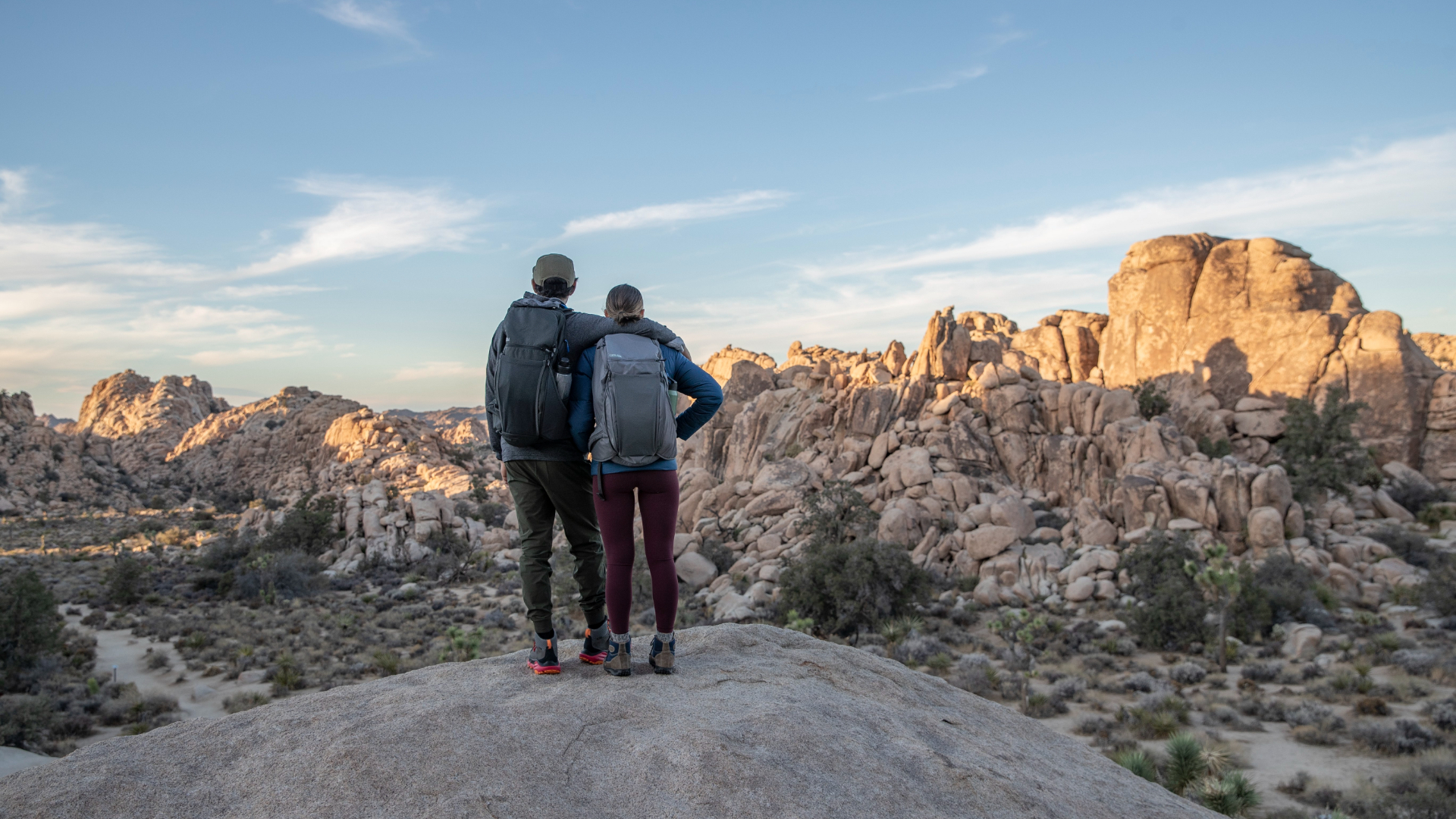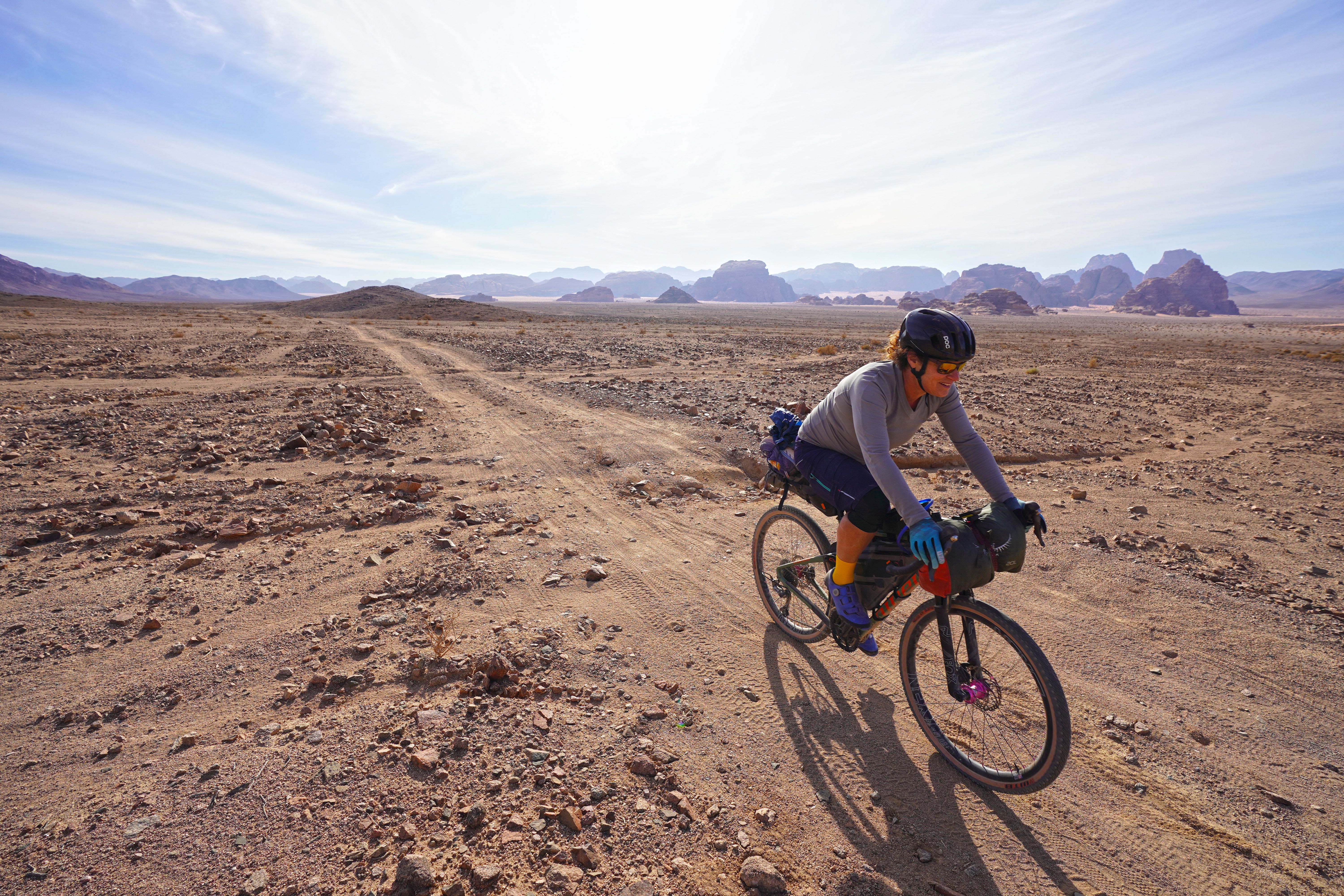Advnture Verdict
Designed for day hikes, the Camelbak Shasta 30 can handle a whole lot more if you ask it to, with loads of storage capacity, myriad great features (including an excellent hydration system) and a very supportive harness.
Pros
- +
Loads of pockets
- +
More support than most daypacks
- +
Raincover
- +
Comes with a reservoir
Cons
- -
Lack of lash points
You can trust Advnture
First impressions
It’s often hard to know what gear to pack and what pack to bring when the seasons and weather are changing. When summer turns to fall, and autumn turns to winter, I need a pack that can hold extra clothing, plenty of water, human and canine snacks, plus safety gear like an emergency bivy and first aid kit. It adds up fast, but the Camelbak Shasta 30 can handle it.
- Check out the best women's backpacks on the market in our buying guide
- Keep thirst at bay on the trails with the best hydration packs
- Top backpacking hacks: tricks to make your trip go more smoothly
Of course, venturing out in all seasons, you need a pack that can keep your gear dry too. While the Shasta pack fabric isn’t waterproof, the pack comes with a raincover stored in a bottom Velcro pocket.
• RRP: $175 (US) / £150 (UK)
• Weight: 1kg 240g / 2lb 12oz
• Volume: 27L / 1,648 cu in (plus 3L/100oz water)
• Sizes: One harness size
• Colours: Castlerock gray/Lake blue
In the field
I used the Camelbak Shasta 30 most when the weather was all over the map and I wanted to bring lots of layers. I also used it in winter. The stretchy side pockets kept traction close at hand. While it’s not intended to be an overnight pack, more than once, that’s how I used it. Because everything stores inside, it’s easy to keep gear out of the weather. The trekking pole bungie also held tent poles that were too tall to fit inside the pack. And Camelbak’s reservoir and valve were my favorites for their high flow and easy filling.
This oversized Camelbak Shasta 30 carries weight as well as a backpacking pack, but it organizes my gear so I can reach it easily. Jackets, bivy, and other bulky gear stashed inside the pack’s main compartment. Water has its own compartment. The 100 oz/ 3L hydration reservoir slide into a zippered sleeve between that compartment and my back where body heat reduced the chance of it freezing.
I kept snacks, phone, and dog treats as well as gloves and hat close at hand in four stretchy side pockets and a massive zippered pocket in the oversized, wing-shaped hip belt. With the pack on and waistbelt buckled, the stretchy pockets locked in contents even though those pockets don’t have a zip. The well-padded hip belt and a stiff, tray-shaped plastic framesheet stabilized the load. Semi-circles of ridged foam in the lower back and shoulder blades kept the pack bag off my back and created airflow, so I got less sweaty without my load feeling wobbly.
On days when the sun ducked behind the clouds, I zipped my sunglasses into the fuzzy essentials pocket. It sits right above the stretch overflow pocket, which is where I stashed my fleece until the sun set. And when it got wet, the raincover was quick to grab and slid over my pack to keep the contents dry.
Vermont-based writer, photographer and adventurer, Berne reports on hiking, biking, skiing, overlanding, travel, climbing and kayaking for category-leading publications in the U.S., Europe and beyond. In the field, she’s been asked to deliver a herd of llamas to a Bolivian mountaintop corral, had first fat-biking descents in Alaska, helped establish East Greenland’s first sport climbing and biked the length of Jordan. She’s worked to help brands clean up their materials and manufacturing, and has had guns pulled on her in at least three continents.


